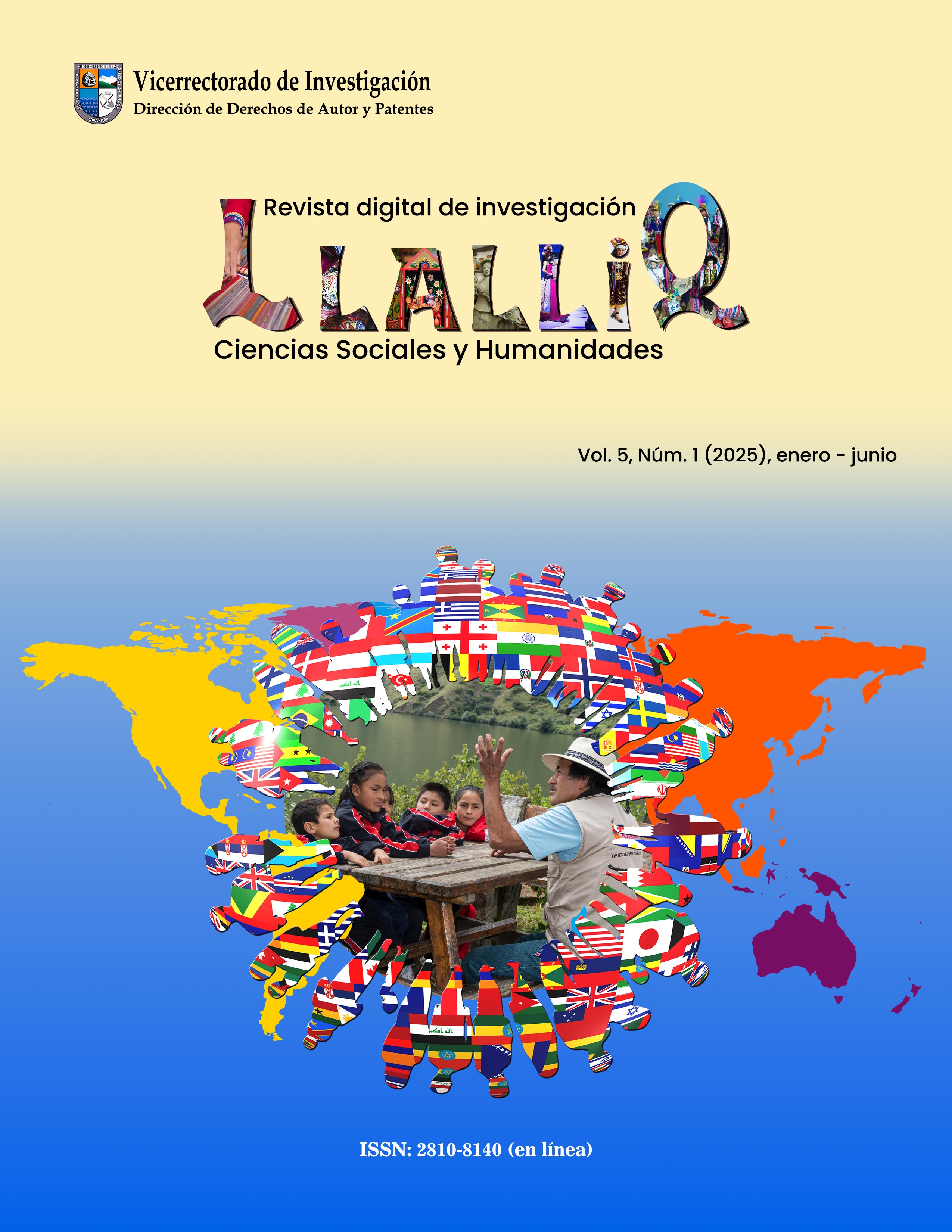Typology and contexts of funerary structures during the Late Intermediate Period in the Puccha River basin, Huari province, Ancash
Main Article Content
Abstract
Archaeological evidence regarding tombs from the Late Intermediate Period is perhaps the most abundant in the central Andes compared to other periods, particularly in the highlands. This research focuses on the Conchucos region in Ancash, through systematic surveys and excavations a large number of tombs were identified, that shed light on the funerary customs of the ethnic groups (Huari and Pinco) who inhabited this region during the aforementioned period. Based on the variety of funerary structures, we present a typology of tombs that helps standardize the descriptions and nomenclature of tombs in the Ancash region.
Downloads
Article Details

This work is licensed under a Creative Commons Attribution 4.0 International License.
References
Arkush, E. N. (2014). I against my brother: Conflict and confederation in the south-central Andes in late prehistory”. En A. K. Scherer, & J. W. Verano (eds.), Embattled bodies, embattled places: War in pre-Columbian Mesoamerica and the Andes (pp. 199-226). Dumbarton Oaks Research Library and Collection.
Bauer, B. S., & Kellett, L. C (2010). Cultural Transformations of the Chanka Homeland (Andahuaylas, Peru) During the Late Intermediate Period (A.D. 1000–1400). Latin American Antiquity, 21(1): 87–111. DOI: https://doi.org/10.7183/1045-6635.21.1.87
Bennett, W. (1944). The North Highlands of Perú: Excavation in the Callejón de Huaylas and at Chavín de Huántar. Anthropological Papers of the American Museum of Natural History, 39, 1-116.
Cotillo Caballero, J. (2018). Tumba Lítico- Subterránea de Jancu. Asociacion cultural Brisas del Titicaca.
Covey, R. (2008). Multiregional Perspectives on the Archaeology of the Andes During the Late Intermediate Period (c. A.D. 1000–1400). Journal of Archaeological Research 16(3), 287-338. DOI: https://doi.org/10.1007/s10814-008-9021-7
D’Altroy, T. (2014). The Incas (Peoples of America). Wiley-Blackwell.
Espinoza, E. (s.f.). Ocupación Tardía Del Asentamiento Waracayoc en Chavín De Huántar.
Herrera, A. 2005. Territory and Identity in the Pre-Columbian Andes of Northern Peru. Ph.D diss University of Cambridge.
Ibarra, B. R. (2024). Continuity and Change in the Cult of the Dead: shaping kin formation in the Andes (AD 1000-1600). Journal of Field Archaeology, 1–19. https://doi.org/10.1080/00934690.2024.2370113 DOI: https://doi.org/10.1080/00934690.2024.2370113
Ibarra, B. R. (2021). Cult of the Dead and Ancestor Veneration In The North Highlands of Peru (AD 200 – 1600) and their Implication in Political Organization and the Emergence of Ayllu In the Central Andes. Ph.D. diss., Tulane University, New Orleans.
Ibarra, B. R. (2016). Estrategias de ocupación inca en la Sierra de Áncash: El Rol de Tambos y Colcas en la definición de provincias incas. En B. Ibarra Asencios (ed.), Arqueología de La sierra de Ancash 2: Cronología y Espacio. (pp. 171-209). Instituto de Estudios Huarinos.
Ibarra, B. R. (2009). Historia prehispánica de Huari, 3000 años de historia de Chavín a los Incas. Instituto de Estudios Huarinos.
Ibarra, B. R. (2004). Arqueología del Valle del Puccha: Economía, Cosmovisión y Secuencia Estilística, en: B. Ibarra (ed.), Arqueología de la Sierra de Áncash: Propuestas y Perspectivas, 251-330). Instituto Cultural Rvna.
Ibarra, B. R. (2001). Análisis de las estructuras funerarias de Marcajirca: Un sitio tardío en la cuenca del río Pushca. Unay Runa, 5, 26 – 30.
León, G. M. (2018). Una historia regional de Conchucos, siglos XVI-XX. Tarea – SUNY Oneonta.
Mantha, A. (2009). Territoriality, social boundaries and ancestor veneration in the central Andes of Peru. Journal of Anthropological Archaeology 28, 158–176 DOI: https://doi.org/10.1016/j.jaa.2009.02.002
Parsons, J.R., C.A. Hastings, & Matos Mendieta, R. (2004). Reconstruyendo el Estado en la Sierra Central del Perú. La Interacción entre Pastores y Agricultores durante el Período Intermedio Tardío en la Región de Tarama-Chinchaycocha. Investigaciones Sociales,12, 55-98. DOI: https://doi.org/10.15381/is.v8i12.6885
Rojas, V. J. (2018). Asentamiento Prehispánico de Ranra Jirka, Colpa - Huari-Áncash. Dios Guari: https://diosguari.blogspot.com/2018/05/apropiacion-de-cumbre-en-ranra-jirka.html
Washburn, E., B. Ibarra, A. Titelbaum, L. Fehren-Schmitz, J. Nesbitt, y V. Oelze. (2022). A Multi-isotope Approach Reconstructing Human Residential Mobility and Diet in the Late Intermediate Period (AD 1000-1450) in Highland Ancash, Perú. Journal of Archaeological Science: Reports, 41. DOI: https://doi.org/10.1016/j.jasrep.2021.103291
